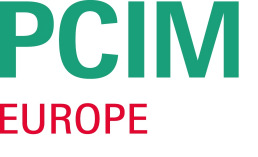
The PCIM show in Nuremberg, Germany started with the announcement of the winners in the competition for the Best Paper and Young Engineer awards. The competition had more than 300 papers entered. The determining criteria were originality, content quality, topicality and daily business practice. The Young Engineer Awards were granted to exceptional contributions from young professionals (not older than 35 years).
The winner of the Best Paper Award is:
Dorothea Werber, Infineon Technologies, Germany
A 1000A 6.5 kV Power Module Enabled by Reverse-Conducting Trench-IGBT-Technology
A reverse conducting IGBT module based on the well-established high insulation 6.5 kV-package platform for single switches is presented. The function of the IGBT-switch and the freewheeling diode is integrated into a single die enabling the higher current rating of 1000A by improved thermal resistance and dynamic loss reduction. Since the maximum allowed junction temperature remains at 125°C, no cutbacks of the power cycling reliability, yet an increase of the effectiveness are observed.
The three PCIM Young Engineer Awards were:
Marinus Petersen, Christian-Albrechts-University of Kiel, Germany
Design of a Highly Efficient Inductive Power Transfer (IPT) System for Low Voltage Applications
Design variants for SS-compensated IPT systems in low voltage applications (
Jan Richter, Karlsruhe Institute of Technology, Germany
Mitigation of Current Harmonics in Inverter-Fed Permanent Magnet Synchronous Machines with Nonlinear Magnetics
Inverter nonlinearities and machine spatial harmonics yield unwanted machine current harmonics causing additional losses and torque ripples. Thus, a method is presented that allows online identification and compensation of both effects for permanent magnet synchronous machines with nonlinear magnetics. The method does not require additional sensor signals and can be implemented easily in existing inverters. Test bench measurements show significant improvements in the whole operational area. Using the proposed method, the total harmonic distortion of the motor current can be reduced to less than an eighth of the uncompensated value at nominal operation for the machine under test.
André Schön, University of Bayreuth, Germany
Comparison of the most efficient DC-DC Converters for Power Conversion in HVDC Grids
The structure of electric energy generation is rapidly changing, from controllable and equally distributed power generation using few high power plants to a decentralized power generation with many, widely distributed power plants. The key technology for the future of the power grid is HVDC power transmission, which will move from the periphery of the AC grid to its center. In this paper two promising HVDC-DC converter topologies will be compared in terms of efficiency and investment costs.
Advertisement





